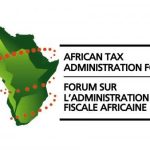Nigerian Insurance Industry Performance Analysis: 2023 in Review
This 2023 analysis of the Nigerian insurance industry, presented by Patience Ikpeme, provides insights into the market dynamics, sectoral contributions, and key challenges faced by insurers in the country. The report examines data to offer a comprehensive review of the industry’s growth and profitability, highlighting both achievements and areas needing improvement.
The Nigerian insurance industry in 2023 exhibited a mixed performance, marked by growth in some sectors and challenges in others. This report delves into the industry’s performance using the provided data to present a broad overview and a sector-by-sector breakdown.
The total Gross Premium Written (GPW) for the industry reached N1.003 trillion, indicating a market size with significant potential. The Non-Life sector dominated, contributing over 61% (N615.1 billion) of the total GPW.
Net premium, which reflects the actual premiums earned by insurers after reinsurance costs, stood at N669.4 billion. This translates to a market performance of 27.0%, indicating a moderately profitable year for the industry as a whole.
Non-Life Insurance sector, encompassing motor, fire, general accident, marine, oil and gas, and miscellaneous insurance, generated the majority of the GPW (N615.1 billion). However, its net premium (N329.0 billion) and market performance (35.1%) suggest lower profitability compared to the Life sector.
Motor Insurance despite leading in GPW (N114.8 billion), its market performance (66.5%) indicates a relatively high payout ratio. This could be due to factors like a high frequency of claims or fraudulent activities. Fire Insurance on the hand, with a lower market performance (46.9%) compared to Motor, might be experiencing challenges in risk assessment or claims management.
General Accident and Marine Insurance sectors displayed modest market performance (6.7% and 30.9% respectively), suggesting potential for improvement in risk pricing or product offerings. Oil and Gas Insurance while boasting the highest GPW (N167.8 billion) likely due to high-value insured assets, its net premium (N54.6 billion) reveals a significant reinsurance reliance. The exceptionally high net loss ratio (99.9%) raises concerns about the industry’s capacity to handle large claims in this sector. The Miscellaneous Insurance category displayed a moderate market performance (28.8%) and might warrant further analysis to understand the specific types of risks covered.
The Life Insurance sector exhibited a lower GPW (N388.1 billion) compared to Non-Life but a higher net premium (N340.4 billion) and market performance (16.1%). This suggests a more profitable year for Life insurers, possibly due to a lower claims frequency compared to Non-Life products.
Claims:
The total net claims paid out by the industry amounted to N382.9 billion, with the Life sector accounting for a significant portion (N213.1 billion). The industry’s overall net loss ratio stood at 57.2%, indicating that for every N100 collected in premiums, insurers paid out N57.2 in claims. This ratio is a crucial profitability indicator, and a figure below 100% is generally considered desirable.
An industry-wide net loss ratio of 57.2% suggests that insurers paid out a substantial portion of their premium income as claims. However, it’s important to note that a net loss ratio below 100% is generally favorable in insurance. A net loss ratio below 100% implies that insurers are not paying out more in claims than they are collecting in premiums. In an ideal scenario, insurers strive for a balance where they can cover claims while still retaining enough premium income to cover operating expenses and generate profits.
Industry Size and Capitalization:
The combined asset base of the industry reached N2.673 trillion, signifying a substantial pool of resources. The Non-Life sector held a larger share (N1.668 trillion) compared to Life (N1.004 trillion). The total shareholder equity of the industry amounted to N851.0 billion, with Non-Life insurers holding a higher share (N670.2 billion) compared to Life (N180.9 billion). This metric reflects the industry’s efficiency in collecting premiums. The low outstanding premium ratio (1.6%) indicates a relatively efficient premium collection process.
The suggests that the metric of total shareholder equity reflects the industry’s efficiency in collecting premiums. Outstanding Premium Ratio (1.6%) indicates the percentage of premiums that remain unpaid or outstanding relative to the total premiums collected. A low outstanding premium ratio (1.6%) suggests that the insurance industry has been effective in collecting most of the premiums due, which is generally favorable for cash flow and financial stability.
The Nigerian insurance industry exhibited moderate growth in 2023, with the Non-Life sector generating the majority of premiums. Profitability varied across sectors, with Life insurance demonstrating a higher market performance compared to Non-Life. High net loss ratios in some Non-Life sectors (Motor, Fire, Oil and Gas) suggest potential areas for improvement in risk pricing, claims management, or fraud prevention. The industry boasts a substantial asset base and efficient premium collection.
The Nigerian insurance industry has the potential for significant growth but it faces several challenges that need to be addressed. The current insurance penetration rate in Nigeria is very low compared to developed economies. Raising awareness and offering innovative, affordable products can significantly expand the market.
Embracing technology like InsurTech solutions can streamline operations, improve risk assessment, and enhance customer service, leading to greater efficiency and cost reduction. In addition, developing new products tailored to specific needs (e.g., agriculture, cyber insurance) can attract new customer segments and cater to the evolving risk landscape. Also, partnering with microfinance institutions and leveraging mobile technology can make insurance products more accessible to low-income earners in rural areas.
Challenges:
Limited public understanding of insurance benefits remains a hurdle. Educational campaigns and financial literacy initiatives are crucial to address this. Strengthening regulatory frameworks and ensuring stricter enforcement can build trust in the industry and combat fraudulent practices. A major challenge is the prevalence of inadequate infrastructure and a limited network of insurance agents in rural areas both of which hinder wider market access.
Addressing factors contributing to high claims ratios in certain sectors (e.g., fraudulent claims in motor insurance) is essential for long-term profitability.
It is very important that insurance companies are encouraged to develop innovative products, invest in technology, improve risk management practices, and prioritize customer service to enhance competitiveness.
The National Insurance Commission (NAICOM) should strengthen regulations where lapses are discovered, as well as improve enforcement mechanisms, and promote consumer protection initiatives.
Government needs to introduce policies that incentivize insurance uptake, support infrastructure development in rural areas, and promote financial literacy programmes.
Conclusion:
The Nigerian insurance industry, despite its challenges, presents a promising landscape for growth. By embracing innovation, addressing key challenges, and fostering collaboration among stakeholders, the industry can unlock its full potential and contribute significantly to the nation’s economic development and financial inclusion.




